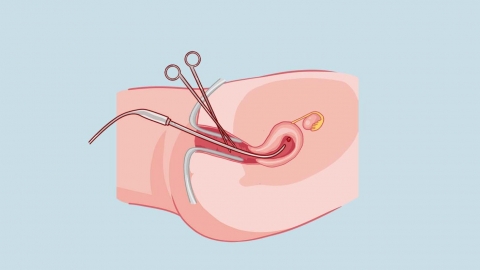How large does the post-abortion residue need to be for a curettage procedure?
Generally speaking, "qinggong" refers to a dilation and curettage (D&C) procedure, while "renliu" refers to an induced abortion. A D&C procedure is required when the post-abortion intrauterine residue exceeds 10 millimeters in size. Detailed explanation is as follows:

A D&C can be performed surgically or medically and is commonly used to remove residual tissue in the uterine cavity following an incomplete abortion. This procedure effectively clears residual intrauterine tissue, prevents uterine infection, and alleviates symptoms such as excessive uterine bleeding and abdominal pain. If the intrauterine residue is small, it may be expelled naturally over time.
However, if the intrauterine residue is large—for example, with a diameter greater than 10 millimeters—using medical management may result in incomplete expulsion of the residue and could lead to complications such as intrauterine infection or increased vaginal bleeding. In such cases, surgical D&C is necessary to prevent serious complications. It should be noted that D&C procedures may cause physical trauma and should be performed under the guidance of a physician.
After undergoing an induced abortion, it is also important to adjust one's diet. It is recommended to consume more foods rich in high-quality vitamins, minerals, proteins, and dietary fiber, while avoiding cold, spicy, or irritating foods, to promote rapid recovery of the uterus.




